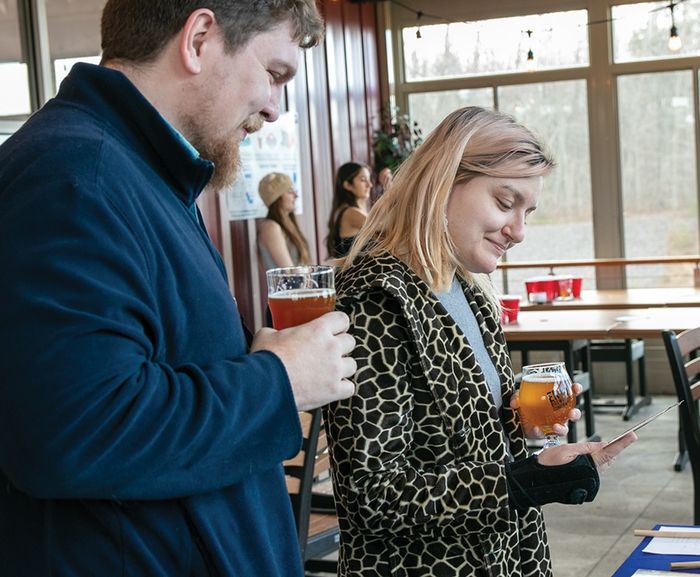Faculty members partner with Erie Brewing Company and Pennsylvania Sea Grant to create awareness of invasive species.
Scientists are inherently creative, always looking for new solutions to old problems. Consider the problem of aquatic invasive species (AIS)—non-native plants, animals, or pathogens—in Lake Erie. They’re one of the greatest threats to biodiversity and native communities of species, and they can spread easily through unwitting human assistance and connected waterways, such as the Great Lakes.
Biologists know that AIS harm the environment, the economy, and human and animal health, but how can they teach others and enlist the help of the public in fighting AIS?
Last year, a team from Behrend came up with a novel answer: an awareness campaign involving craft beer.
“Good beer needs high-quality, clean water, and invasive species threaten our freshwater supply,” said Dr. Lynne Beaty, assistant teaching professor of biology. “So, we thought a collaboration with Erie Brewing was a great way to promote AIS awareness because controlling invasive species can help improve water quality. We were thinking, too, that this might be an excellent way to reach adult audiences who may accidentally transfer AIS when they move boats to different water bodies.”
Beaty developed the campaign with Dr. Sam Nutile, assistant professor of biology; Dr. Adam Simpson, assistant teaching professor of biology; Kristen McAuley, lecturer in marketing; and Sara Stahlman, extension leader for Pennsylvania Sea Grant.
The group met with Erie Brewing’s brewmaster, Tate Warren, who agreed to create a draft series of special AIS-themed brews for invasive species awareness.
The first, Mysterysnail Ale, “an amber ale loaded with flavors of bread, biscuit, and caramel malt,” debuted at a launch party at Erie Brewing in Knowledge Park last summer. Visitors had the opportunity to try a new brew and learn about many AIS at tables staffed by faculty members from Behrend’s School of Science and staff members from Sea Grant, a research, education, and outreach program administered by the college.
“Mysterysnails are so named because females produce young, fully developed snails that ’mysteriously‘ appear. They’re a group of invasive species that originate in Asia but have found their way to Lake Erie,” Beaty said. “They compete with native species, alter nutrient ratios, and transmit parasites to wildlife.”
The second beer in the series was released in December. Round Goby Rye was inspired by the invasive round goby, a small but aggressive bottom-dwelling fish that affects Great Lakes food webs by outcompeting native species and feeding on their eggs and young.
For each of the beers, a promotional poster not only advertises the beer and its distinct flavor, but also gives facts about the highlighted species. QR codes on the posters lead users to more information about the featured AIS. Two more brews were released at a launch event in May: a Zebra Mussel Malt, and a Hazy Hydrilla.
The AIS draft series is currently on tap at Erie Brewing and other participating Ale Trail breweries, including Lavery Brewing, Arundel Cellars and Brewing, Twisted Elk Brewing, Brewerie at Union Station, Nostrovia, and Erie Ale Works.
For more information about aquatic invasive species, visit seagrant.psu.edu.
